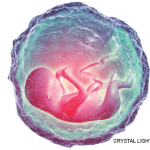In our roles as clinicians and investigators, rheumatologists have learned a great deal about the various forms of vasculitis. In some cases, we even know the most crucial element—etiology. How empowering that knowledge is, especially when the etiological agent persists and perpetuates the process. In that setting, given adequate therapeutic interventions, we can even affect cures. Examples are most evident in the subset of vasculitides that we call secondary, such as vasculitis as a complication of infection (e.g., endocarditis, viral hepatitis), resectable malignancy (e.g., paraneoplastic vasculitis), and emboli from proximal sources (e.g., atrial myxoma).
Sometimes, exposure to a new antigen or hapten (e.g., vaccination, medication) or a transient infection may lead to vasculitis. In this situation, disease may pursue a self-limiting course if the precipitant is removed, or the host eliminates the pathogen and re-establishes normal immune function without external intervention (e.g., most cases of childhood Henoch–Schönlein purpura).
Even these examples of vasculitis are uncommon complications of the primary illnesses, and the observations beg questions such as, Why do they occur in such a small percentage of patients (less than 1%)? Is it a function of unique properties of the “bug,” drug, or tumor, or a function of a disease-prone immune response? Whatever the answer to this question, recognition of the cause allows an opportunity for cure. In contrast, a cure is rarely achieved in primary (idiopathic) vasculitides for which autoimmune mechanisms are assumed.
What do we know about the idiopathic vasculitides? Through extensive research over almost 60 years, we have come to recognize that some forms of vasculitis are associated with the deposition of immune complexes in vessel walls or injury mediated by a predominance of mononuclear cells, neutrophils, eosinophils, or combinations of cell types, cytokines, and antibodies. Clinical observations, imaging, biopsy, and autopsy findings have further facilitated separation and classification of these diseases based on the size of vessels affected, distribution of organs involved, and histopathological findings. Consequently, we use terms such as small-, medium-, and large-size vessel vasculitis. We also use the histological terms leukocytoclastic, eosinophilic, and granulomatous versus nongranulomatous to characterize vasculitis. Through meticulous anatomic and histopathological descriptions, we attempt to gain a more complete understanding of etiology and pathogenesis, ultimately striving to achieve cures. Unfortunately, this goal is rarely achieved for any of the primary vasculitides.
Identifying Patterns in Vascular Inflammatory Disease
These observations urge further reflection and posing of new questions about the patterns of vascular inflammatory disease.

